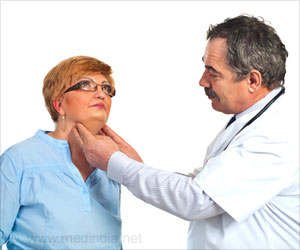After receiving acupuncture treatment three days a week during radiation treatment, head and neck cancer patients experienced less dry mouth, reports a new study.

‘Dry mouth is a severe concern for head and neck cancer patients undergoing radiation therapy. The symptoms severely impact the quality of life and oral health, and current treatments have limited benefits.
’





True acupuncture (TA) had significantly lower xerostomia scores than standard care control (SCC) and marginally lower than the sham acupuncture (SA), with no differences between SA and SCC. One year after the end of radiation therapy, the incidence of clinically significant xerostomia was 35% in the TA group, 48% in the SA group and 55% in the SCC group.The study included 339 head and neck cancer patients undergoing radiation treatment at MD Anderson and Fudan University Cancer Center in Shanghai between December 16, 2011, and July 7, 2015. The patients were divided into three groups. One group received true acupuncture, another group received sham acupuncture, and the third group, the SCC group, received radiation and oral health education but no acupuncture. None had received acupuncture prior to participating in the study.
Patients assigned to either TA or SA received acupuncture three days a week on the same day as their radiation treatment, which lasted six to seven weeks. The sham procedure involved a real needle at a point not indicated for xerostomia, real needles at sham points and placebo needles at sham points.
Results were based on data derived from a self-report questionnaire. Patients completed the Xerostomia Questionnaire (XQ), an eight-item survey assessing symptoms of the condition. XQ scores under 30 corresponded to mild or no symptoms of xerostomia. The data were collected at baseline, at the end of radiotherapy, and three, six and 12 months after radiation treatment.
TA resulted in significantly fewer and less severe dry mouth symptoms one year after treatment. The xerostomia score in the TA group was 26.6 vs. 31.3 in the SA group and 34.8 in the SCC group.
Advertisement
"The evidence is to a point where patients should incorporate acupuncture alongside radiation treatment as a way to prevent the severity of dry mouth symptoms," said Cohen. "I think with this study, we can add acupuncture to the list for the prevention and treatment of xerostomia, and the guidelines for the use of acupuncture in the oncology setting should be revised to include this important chronic condition."
Advertisement
Future studies will focus on ensuring acupuncture delivery is well controlled and will evaluate inconsistencies in response to sham acupuncture. Additional studies are needed to confirm the trial results and better understand the neurological mechanisms of acupuncture.
Source-Eurekalert














